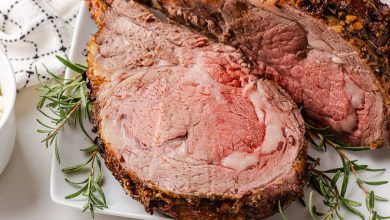Cornstarch – Nutritional Profile and Ingredient Information
Cornstarch is a widely used culinary ingredient, commonly known for its thickening properties in various recipes, such as sauces, soups, puddings, and desserts. Derived from the endosperm of corn kernels, it’s a fine, white powder with a neutral flavor that helps enhance the texture of foods.
Nutritional Breakdown per 100g of Cornstarch
| Nutrient | Value |
|---|---|
| Energy | 381 kcal |
| Protein | 0.26 g |
| Total Fat | 0.05 g |
| Saturated Fat | 0.009 g |
| Carbohydrates | 91.27 g |
| Fiber | 0.9 g |
| Sugar | 0.0 g |
| Calcium | 2.0 mg |
| Iron | 0.47 mg |
| Magnesium | 3.0 mg |
| Phosphorus | 13.0 mg |
| Potassium | 3.0 mg |
| Sodium | 9.0 mg |
| Zinc | 0.06 mg |
| Copper | 0.05 mcg |
| Manganese | 0.053 mg |
| Selenium | 2.8 mcg |
| Vitamin C | 0.0 mg |
| Thiamin (Vitamin B1) | 0.0 mg |
| Riboflavin (Vitamin B2) | 0.0 mg |
| Niacin (Vitamin B3) | 0.0 mg |
| Vitamin B6 | 0.0 mg |
| Folate | 0.0 mcg |
| Vitamin B12 | 0.0 mcg |
| Vitamin A | 0.0 mcg |
| Vitamin E | 0.0 mg |
| Vitamin D2 | 0.0 mcg |
Allergen Information
Cornstarch is a gluten-free ingredient, making it a great choice for individuals with gluten intolerance or celiac disease. However, as it is derived from corn, those with corn allergies should avoid consuming it.
Dietary Preferences
Cornstarch is suitable for various dietary needs, including:
- Gluten-Free Diets: It is naturally gluten-free and can be used as a substitute for wheat flour in many recipes.
- Vegan and Vegetarian: Cornstarch is plant-based and free from animal-derived products.
- Low-Sodium and Low-Fat Diets: It contains minimal fat and sodium, making it appropriate for those watching their intake of these nutrients.
- Keto Diets: While cornstarch is high in carbohydrates, it is typically not included in a strict keto diet due to its high carb content. However, it can be used sparingly in low-carb dishes for thickening purposes.
Culinary Uses and Tips
Cornstarch is a versatile ingredient in the kitchen, prized for its ability to thicken liquids without altering flavor. It’s used to:
- Thicken Sauces & Gravies: Combine cornstarch with a small amount of cold water to create a slurry, which can then be added to hot liquids to thicken them.
- Make Puddings & Custards: Cornstarch is an essential ingredient in many creamy desserts, providing the desired smooth texture.
- Breading and Frying: Cornstarch is often used to coat food items before frying, providing a crispy, light texture.
It’s essential to ensure that cornstarch is mixed with cold water or another liquid before being added to hot mixtures, as direct contact with heat can cause clumping.
Conclusion
Cornstarch is a kitchen staple that plays a critical role in many dishes, offering thickening power, smooth textures, and versatility. Whether you’re baking, making sauces, or preparing soups, it’s an invaluable ingredient that supports a wide array of culinary applications, from everyday meals to gourmet creations. It’s important to remember that although cornstarch is suitable for various diets, it should be used with caution in low-carb or ketogenic meal plans.










